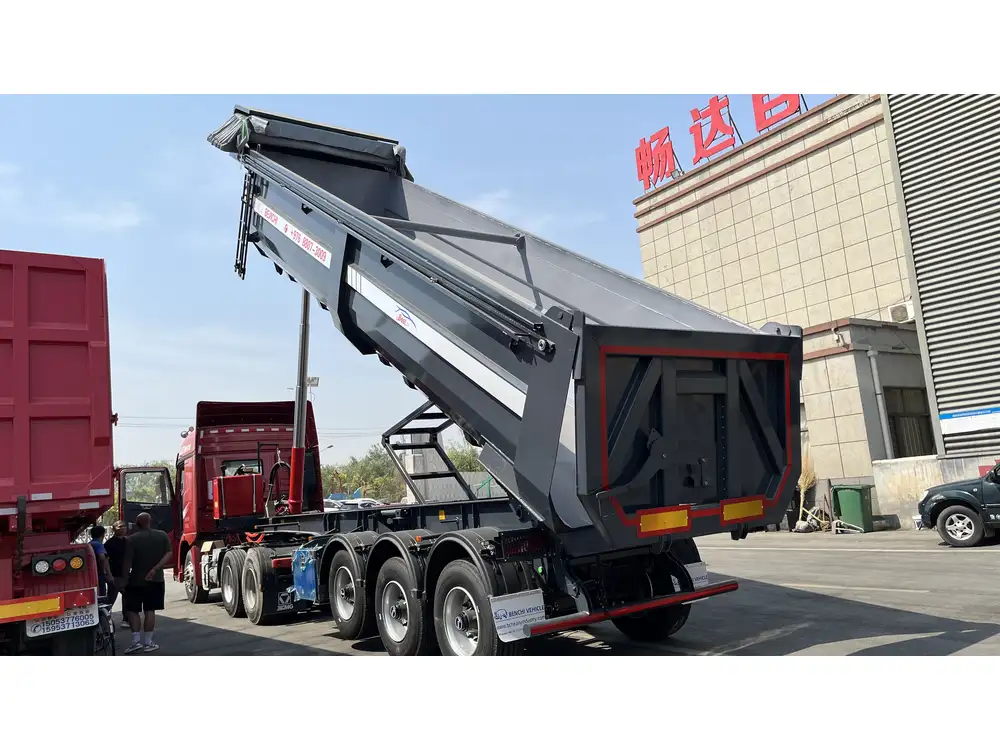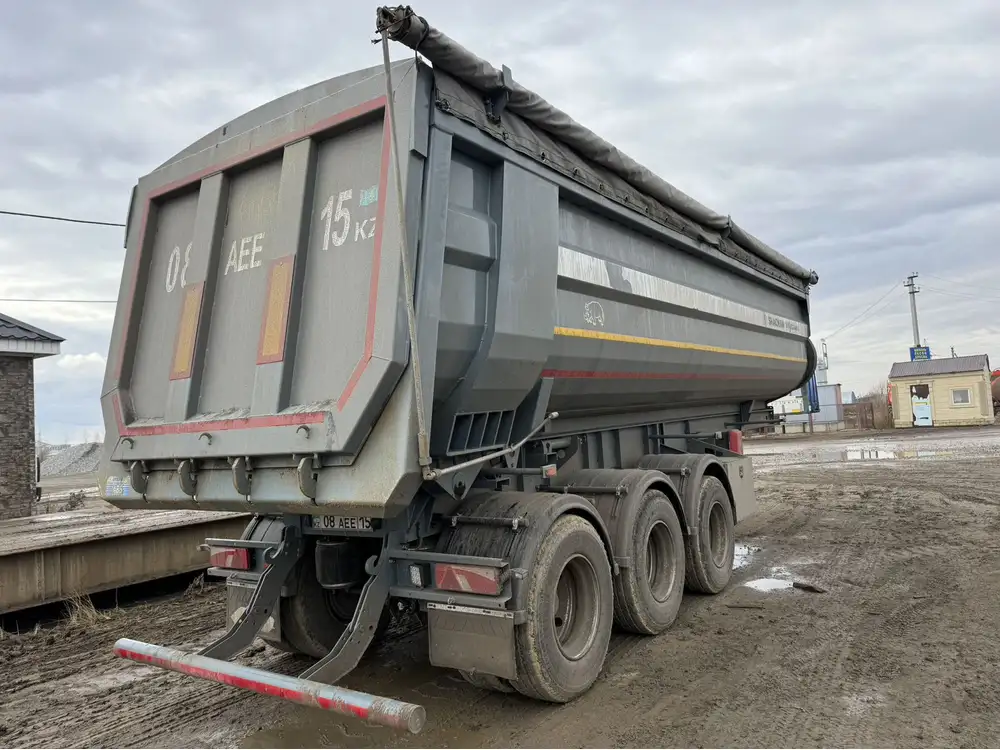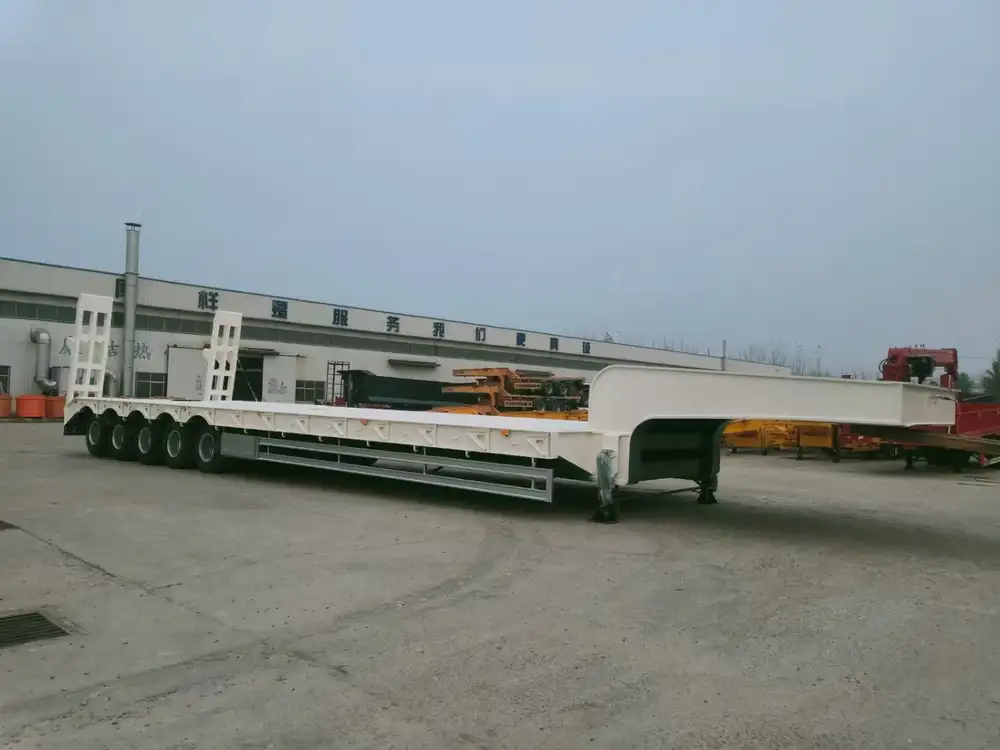When it comes to the world of semi-trailers, understanding the configuration of wheels is essential for various applications—from logistics and transportation to safety regulations and manufacturing standards. A frequently asked question within the industry revolves around the specifics of two-axle semi-trailers, particularly, “how many wheels are on a 2 axle semi-trailer?” This question, although seemingly straightforward, opens the door to a wealth of considerations regarding design, functionality, and legal implications. In this guide, we will explore these aspects in detail, shedding light on this pivotal topic.
The Basics of Semi-Trailer Wheel Configuration
A semi-trailer is designed to be towed by a truck or tractor unit, typically utilizing a unique support system. Understanding the wheel configuration is critical as it impacts weight distribution, maneuverability, and overall performance.
Axle Setup
- Axle Count: A two-axle semi-trailer typically consists of two axles, and the axles are positioned strategically to support the weight of the cargo transported.
- Wheel Count: Each axle in a standard two-axle semi-trailer usually has two wheels (one on each side), leading to a total of four wheels. However, variations do exist that can influence this number.

Weight Distribution and Efficiency
Key Factors
- Cargo Load: The type and weight of the cargo affect the performance of a two-axle semi-trailer. Proper weight distribution is crucial for stability and safety during transit.
- Axle Load Capacity: Each axle has a specific load capacity that must not be exceeded. For instance, common load ratings can range from 15,000 to 25,000 pounds per axle.
- Tire Specifications: The capacity of the tires mounted on these wheels must also align with safety standards and the operational requirements.
Variations in Configuration: Understanding Alternative Designs
While four wheels are typical for standard two-axle semi-trailers, it’s vital to consider alternative designs and configurations:
| Design Variation | Description |
|---|---|
| Dual Tire Setup | Some two-axle setups may incorporate dual tires on each wheel to increase load-bearing capacity, resulting in eight tires in total. |
| Wide Base Tires | This configuration may use wider tires which can offer improved stability and load distribution while maintaining the four-wheel setup. |
| One-Wheel Axle Design | In rare cases, specialized trailers may use one wheel per axle, resulting in a reduced total wheel count, though this is uncommon for standard applications. |

The Importance of Understanding Wheel Configuration
Legal Compliance
Understanding the specific count and design of wheels on a two-axle semi-trailer is crucial for legal compliance with transportation regulations. Local weight limits, state regulations, and federal guidelines often dictate not just how heavy a trailer can be but also how its weight should be distributed across wheels and axles.
- Permitting and Licenses: Many jurisdictions require special permits for vehicles exceeding weight limits, which can hinge on wheel and axle specifications.
- Inspection and Maintenance: Regular inspections focusing on the integrity of wheels and axles play a pivotal role in ensuring compliance and safety.
Maintenance Considerations
Maintaining a semi-trailer is paramount for longevity and functionality. Here are critical maintenance tips specific to wheel setups:
- Regular Tire Checks: Inspect tire pressure, tread wear, and any signs of damage. Under-inflated tires can contribute to unsafe driving conditions and lower fuel efficiency.
- Axle Lubrication: Ensure that axles are regularly lubricated to prevent wear and tear, enhancing operational longevity.
- Alignment Checks: Misalignment can cause uneven tire wear and may lead to higher maintenance costs in the long run. Ensure that wheel alignment is routinely checked, especially after extensive travels.

Safety Measures in Operating Two-Axle Semi-Trailers
Operating a two-axle semi-trailer requires adherence to several safety protocols:
Load Management
- Proper Loading Techniques: Distributing cargo evenly across the trailer is paramount to prevent axle overloading which can lead to tire blow-outs or axle failure.
- Know Your Limits: Familiarize yourselves with both the trailer’s and vehicle’s weight capacities to avoid exceeding operational limits.
Driving Practices
- Pre-Trip Inspections: Always conduct thorough inspections before embarking on long journeys. Check the integrity of the wheels, lights, brakes, and other critical components.
- Driving Sensitivity: Acknowledge that a two-axle semi-trailer will respond differently compared to those with more axles. Adapt driving techniques based on load and conditions, especially on turns and inclines.

Comparison of Two-Axle Semi-Trailers with Other Configurations
To further grasp the relevance of wheel count on semi-trailers, let us compare two-axle designs with other common configurations:
| Trailer Type | Axle Count | Typical Wheel Count | Benefits |
|---|---|---|---|
| 2-Axle Semi-Trailer | 2 | 4 | Cost-effective, easier maneuverability, lower maintenance costs. |
| 3-Axle Semi-Trailer | 3 | 6 | Greater stability, improved load distribution, higher overall capacity. |
| 4-Axle Semi-Trailer | 4 | 8 | Suitable for extremely heavy loads, enhanced traction, and stability. |
Conclusion: The Role of Wheel Count in Operational Efficiency
In summary, a two-axle semi-trailer typically features four wheels under standard configurations, but alternative designs exist that can deviate from this norm. Understanding several critical aspects regarding wheel configurations, legal considerations, maintenance, and safety can significantly bolster operational efficiency and compliance.
As a manufacturer and industry stakeholder, it’s essential to not only comprehend the foundational elements pertaining to wheels and axles but also to engage in continuous learning about advancements in technology and regulations that govern trailer construction and safety. Investing time and resources in this knowledge will ensure your operation stands resilient in the dynamic landscape of transportation logistics.
By being informed, your decision-making processes regarding two-axle semi-trailers will be more precise, aligning with not just current standards but also setting a precedent for excellence within the industry.



